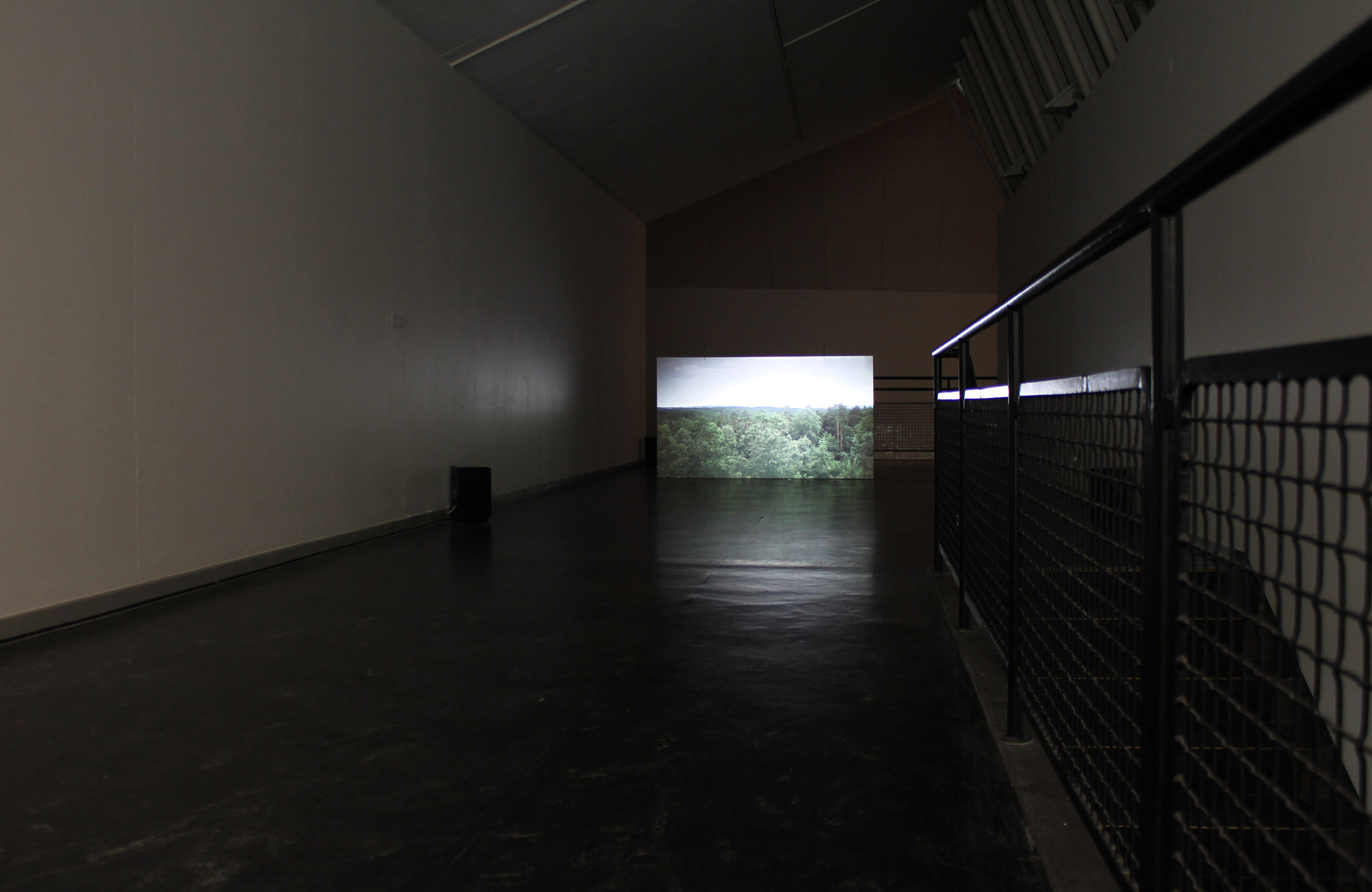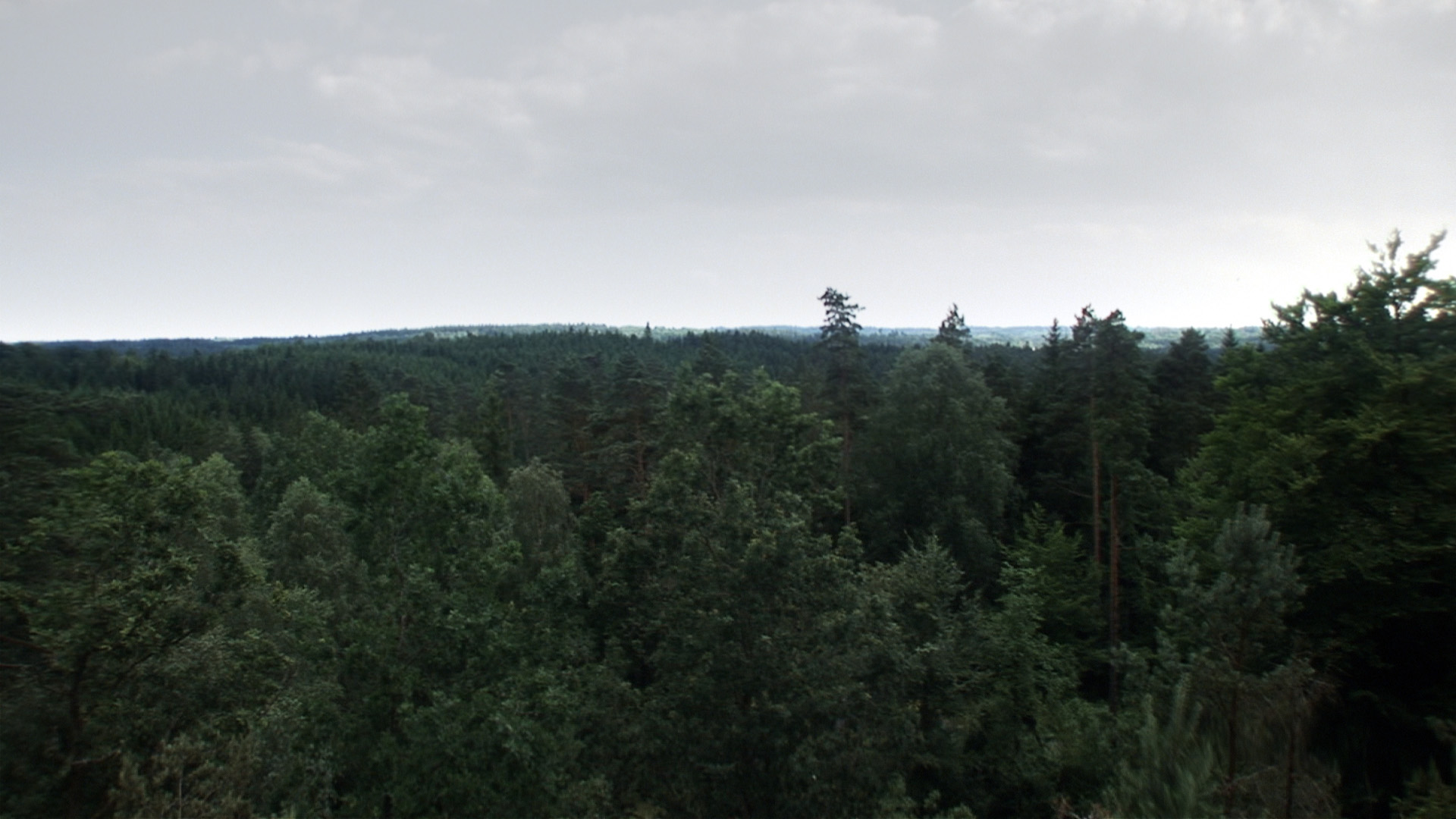................................................
................................................
................................................
................................................
akt (2010)


.....................................................................................................................................................................................................................................................................................................
akt / act (2010). Installation concisting of a projected video and sound, 10', loop. Voice: Josefine Erlingsson. Translation from text to sound: Josefine Erlingsson and Karolina Erlingsson. Photo & postproduction: Simon Möller.
"akt brings the viewer straight into an almost mythical image of the Swedish forest, shot from a high vantage point on a cloud summer day. A short text based on the question 'Where are you?' and the echo it produces has been adapted to an old Scandinavian singing technique known as kulning. Through mutually agreed tonal signals women could communicate with each other over long distances as they were herding cattle."
-Anders Kreuger.
.....................................................................................................................................................................................................................................................................................................
.jpg)
akt (2007). Text, pencil on paper, 21 x 29,7 cm.
.....................................................................................................................................................................................................................................................................................................
"Turn yourself into me. Turn me into you." (1)
"I will never be like you, I change all the time, you can’t ever catch me." (1)
The story of Echo and Narcissus tells of Echo, the nymph of the voice, that she has been cursed by Juno to be only able to respond: "The noisy Nymph, who has neither learned to hold her tongue after another speaking, nor to speak first herself." (2) Echo’s fate resembles her love. She can never speak to him; only repeat his most recent words. "Ah! how often did she desire to accost him in soft accents, and to employ soft entreaties! Nature resists, and suffers her not to begin; but what Nature does permit, that she is ready for; to await his voice, to which to return her own words." (2)
At this time, Narcissus had "so stubborn a pride in his youthful beauty" (2) that Echo realizes he is not interested, and: "Thus rejected, she lies hid in the woods, and hides her blushing face with green leaves, and from that time lives in lonely caves; but yet her love remains, and increases from the mortification of her refusal. Watchful cares waste away her miserable body; leanness shrivels her skin, and all the juices of her body fly off in air. Her voice and her bones alone are left. Her voice still continues, but they say that her bones received the form of stones. Since then, she lies concealed in the woods, and is never seen on the mountains: but is heard in all of them. It is her voice alone which remains alive in her." (2)
A while back, my youngest sister told me about "kulning". She told me that a long time ago the forests weren’t as quiet as they are today. Sometimes, you would hear the echoes of singing and kulning. Sweden used to be one of few countries where, in pastoral life, cattle herding was the work of girls and women. Kulning, a kind of song that uses a special vocal technique, was a working tool used to call for the animals. Perhaps kulning was also a way to pass the time, and sometimes maybe just a way to hear each other. Kulning offered a kind of freedom, it really required you to sing your heart out to make yourself audible, and unlike the folk songs that were sung in the homes, there were no rules about how and what to sing.
(1) Bergman, Ingmar. Persona. SF, Stockholm, 2005 (orginalfilmen : Svensk filmindustri, cop. 1966)
orginalets text i urval med svensk översättning (av Erik Bökman ; redigering inledning och kommentar av Per Erik Wahlund)
-Karolina Erlingsson, 2008.
.....................................................................................................................................................................................................................................................................................................